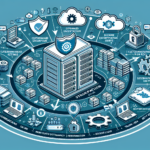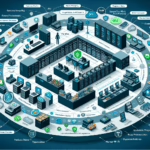Securing IT infrastructure for healthcare systems is crucial due to the sensitive nature of patient data and compliance requirements like HIPAA (Health Insurance Portability and Accountability Act) in the U.S., GDPR (General Data Protection Regulation) in Europe, and other regional regulations. As an IT manager responsible for healthcare IT, here are key strategies to secure the infrastructure:
1. Risk Assessment and Compliance
- Conduct Regular Risk Assessments: Identify vulnerabilities, threats, and risks in the IT infrastructure. Use tools like vulnerability scanners and penetration testing to evaluate the system.
- Ensure Compliance: Ensure the healthcare system adheres to relevant regulations (e.g., HIPAA, GDPR, HITRUST). Regularly audit and document compliance processes.
2. Network Security
- Implement Firewalls: Deploy next-generation firewalls (NGFW) to filter traffic and block malicious activity.
- Network Segmentation: Separate sensitive systems (e.g., EHRs, medical imaging) from less critical systems using VLANs or microsegmentation. Limit access between segments.
- Secure Remote Access: Use VPNs with multi-factor authentication (MFA) for remote employees and telemedicine applications.
- Intrusion Detection and Prevention Systems (IDS/IPS): Monitor and respond to malicious activities in real time.
3. Access Control and Identity Management
- Role-Based Access Control (RBAC): Assign access based on roles and responsibilities. Ensure least privilege principles are enforced.
- Multi-Factor Authentication (MFA): Implement MFA for all users to add an extra layer of protection.
- Identity and Access Management (IAM): Use IAM solutions to centrally manage user credentials and permissions.
4. Secure Data Storage and Backup
- Encrypt Data: Encrypt sensitive data at rest and in transit using AES-256 or similar standards.
- Isolated Backups: Store backups in isolated environments to prevent ransomware from affecting them.
- Regular Backup Testing: Test backup systems regularly to ensure data can be restored quickly in case of an incident.
- Immutable Storage: Use immutable storage for critical backups to prevent data tampering.
5. Endpoint and Device Security
- Secure Medical Devices: Ensure medical devices (e.g., IoT devices, imaging machines) are updated with the latest firmware and secure configurations.
- Endpoint Protection: Deploy endpoint detection and response (EDR) solutions on servers, desktops, and mobile devices.
- Patch Management: Automate and regularly apply patches to all systems, including operating systems, applications, and hardware.
6. Virtualization and Container Security
- Secure Virtual Machines (VMs): Implement hypervisor-level security and monitor VM activity for anomalies.
- Kubernetes Security: Use tools like Kubernetes RBAC, Pod Security Policies (PSPs), and network policies to secure containerized workloads.
- Scan Images: Use container image scanners to detect vulnerabilities in Docker/Kubernetes images.
7. AI and Data Analytics Security
- Secure AI Systems: If AI applications (e.g., diagnostics, patient data analysis) are in use, ensure the models and datasets are protected from tampering.
- Monitor Data Pipelines: Ensure data pipelines used in AI/ML workflows are secure and auditable.
- Data Masking: Use anonymization or tokenization to protect data used in AI/ML training.
8. Incident Response and Monitoring
- 24/7 Monitoring: Use Security Information and Event Management (SIEM) systems to monitor logs and detect anomalies.
- Incident Response Plan: Create and test a detailed incident response plan for data breaches, ransomware, or other cybersecurity events.
- Forensic Tools: Deploy tools to investigate incidents and identify root causes.
9. Employee Awareness and Training
- Training Programs: Conduct regular cybersecurity training for employees, emphasizing phishing attacks, secure passwords, and data handling practices.
- Simulated Attacks: Run phishing simulations to test employee awareness and improve response.
10. Physical Security
- Secure Data Centers: Control physical access to servers and storage systems using access cards, biometric systems, and surveillance cameras.
- Environmental Protections: Ensure data centers have fire suppression, temperature control, and backup power systems.
11. GPU and High-Performance Computing (HPC) Security
- Secure GPUs: Protect GPU resources used for AI, medical imaging, or computational tasks by limiting access and monitoring usage.
- Harden HPC Systems: Implement security measures for HPC systems used in research or medical diagnostics.
12. Ransomware Protection
- Anti-Ransomware Tools: Deploy anti-ransomware solutions that detect and isolate malicious activity.
- Data Recovery Plan: Ensure robust backup and disaster recovery processes to recover quickly in case of ransomware attacks.
13. Regular Audits and Penetration Testing
- Third-Party Audits: Engage third-party cybersecurity firms to audit the infrastructure and identify gaps.
- Penetration Testing: Simulate attacks to identify vulnerabilities and improve defenses.
14. Collaborate with Vendors
- Vendor Security Assessments: Ensure third-party vendors comply with your security standards.
- Secure Supply Chain: Verify the integrity of hardware and software components before deployment.
15. Business Continuity and Disaster Recovery
- Business Continuity Plan (BCP): Develop and test a comprehensive BCP for healthcare operations.
- Disaster Recovery (DR): Ensure DR systems are fully operational and can restore critical services quickly.
By implementing these strategies, the IT infrastructure for healthcare systems can be effectively secured, ensuring the protection of sensitive patient data, compliance with regulations, and uninterrupted healthcare services.


